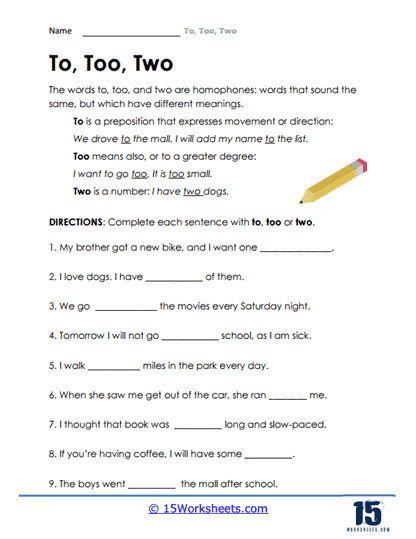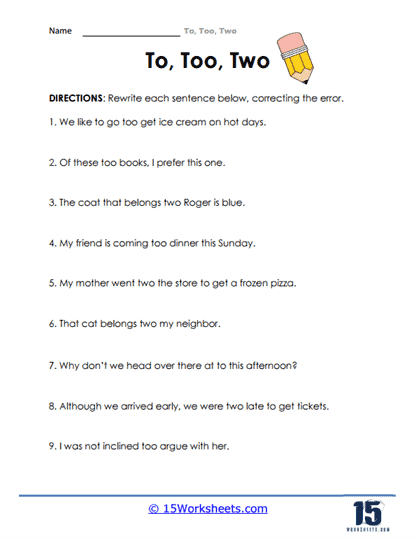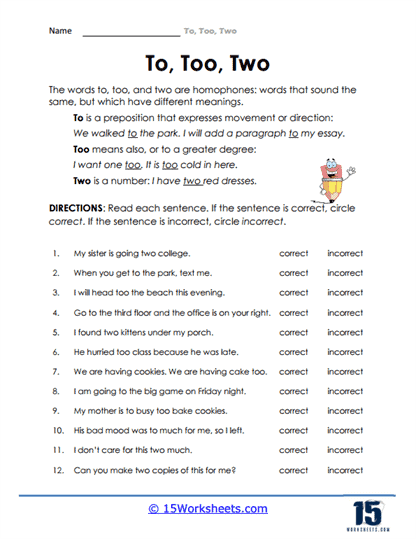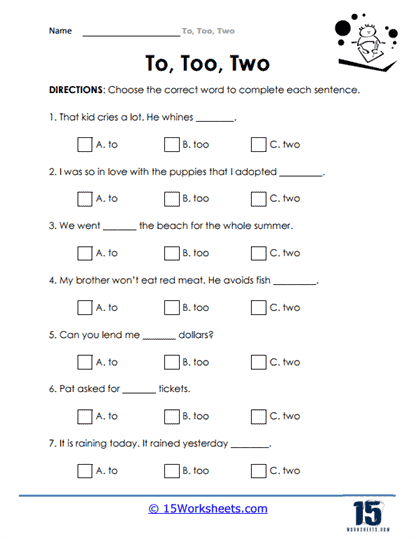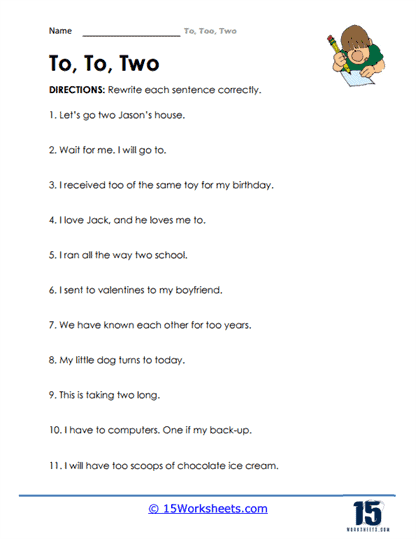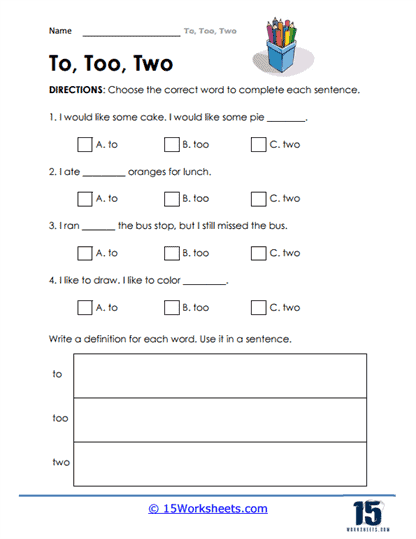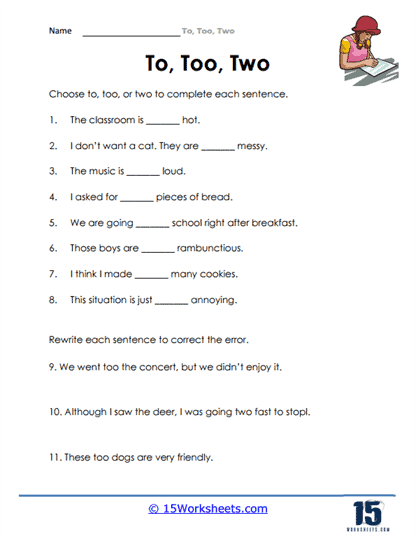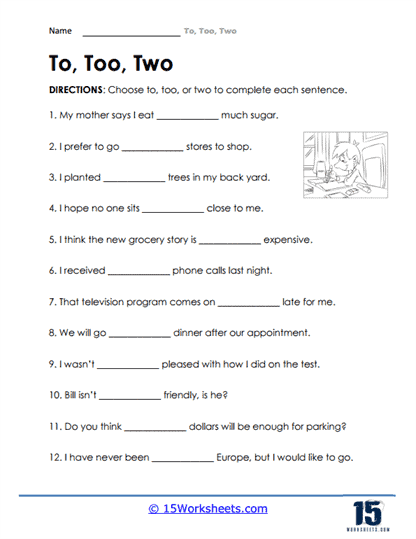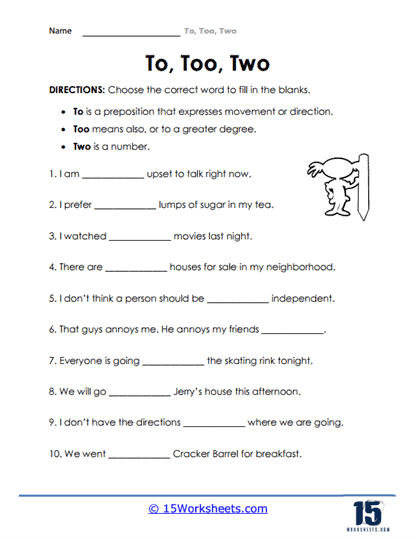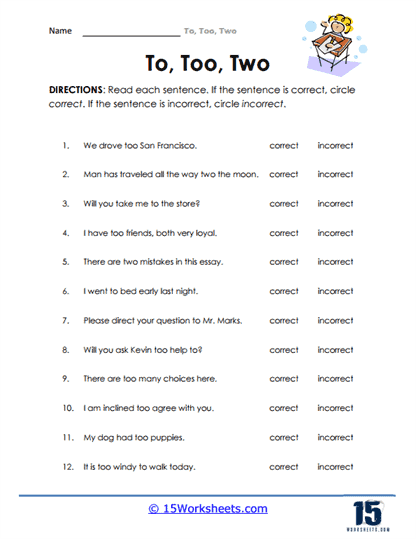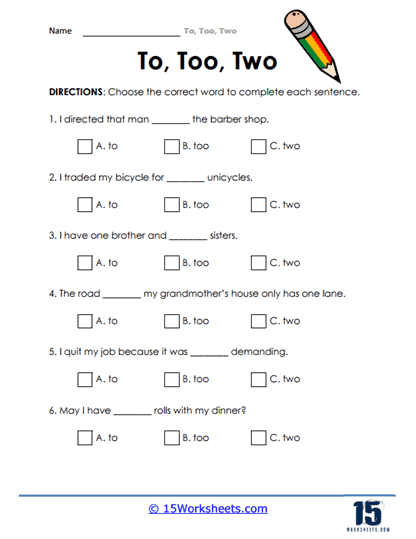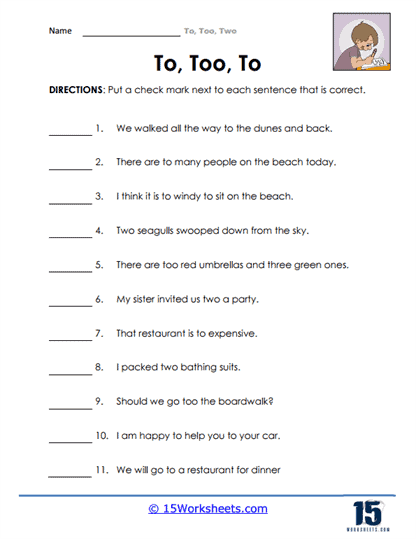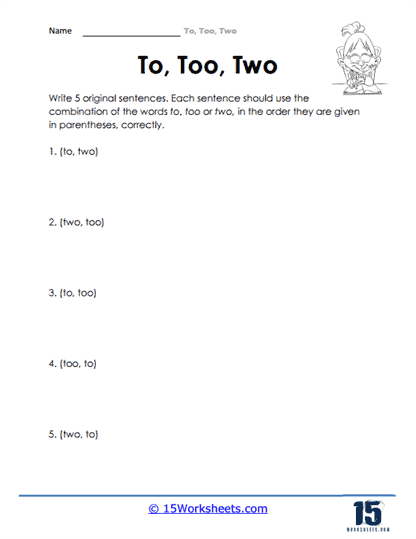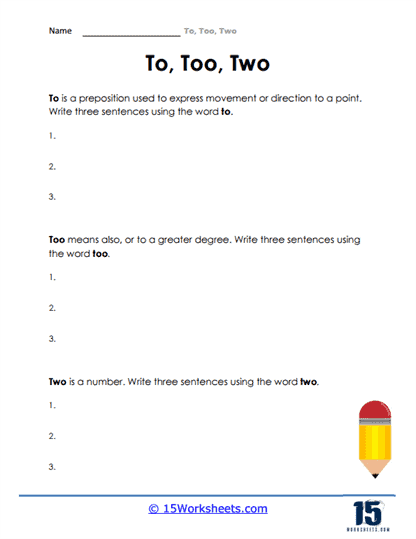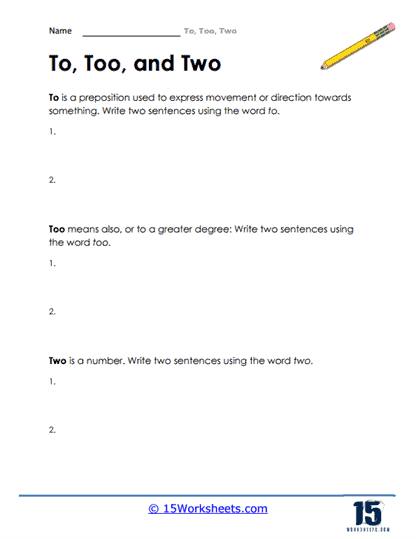To, Too, Two Worksheets
All About These 15 Worksheets
These To, Too, Two worksheets can help students to differentiate between these three words and understand their proper usage. “To” is a preposition used to indicate direction or movement, while “too” is an adverb used to indicate excess or addition. “Two” is a number that comes after one and before three.
These worksheets include a range of exercises and prompts such as fill-in-the-blank exercises, rewriting activities, and short writing prompts. Through these worksheets, students will:
- Complete sentences by adding the words “to,” “too,” or “two” correctly;
- Spot errors in sentences which uses these words incorrectly and rewrite them to reflect proper usage;
- Define what “to,” “too”, and “two” mean and understand how they are used in sentences;
- And write their own sentences showing correct usage of “to,” “too,” and “two.”
By providing students with a variety of exercises and prompts, these worksheets can help students to understand the difference between “to”, “too”, and “two”, and enhance their writing and communication skills. It is important to note that these words are commonly confused, but using them correctly can make a big difference in clear and effective communication.
What Is “To” And How To Use It?
To is both a preposition and a very adaptable little word that may be used in many different contexts to express many different ideas. You can use it to express a goal, a direction of progress, or a point of arrival, in addition to the other uses already mentioned.
When you say something like “I’m going to class tomorrow,” you should say it this way. When we want to convey that a verb is an infinitive, we also use the word to in this context.
When you wish to demonstrate a relationship between two words, such as possession, attachment, or addition, you will frequently use to. You form attachments to other people, and you acquire items that are uniquely yours.
To can also denote a range or a length of time, such as when you say it will take five to ten minutes to complete a task.
There are more contexts in which we use the word “to,” but at this point, you should be familiar with enough of them to be able to tell the difference between it and too.
What Is “Too” And How To Use It?
Too is a handy little word, but unlike to, it is not a preposition; hence, it does not have as many meanings. You can use it in place of “besides,” “in addition,” “also,” or “as well.” But you can also use it for other things, such as when you want to indicate that something is excessive.
You can remark that grammar is overly tricky if you find it challenging to understand and use. Too often in everyday conversation, people use the word “very” as a synonym for “too,” as in “That cupcake is too yummy!”
What Is “Two,” And How To Use It?
To and too are pronounced similarly, even though their spellings are very similar. In addition, another word is pronounced similarly, and that word is the number two.
We refer to pairs of words that share a pronunciation as homophones, and if you look at any list of words that are frequently mistaken, you’ll see many homophones on there. There, their, and they’re, your, and you’re, bear, and bare, along with to, too, and two, are among the most misspelled words in the English language.
It makes no difference to us if the homophones belong to completely distinct word classes or whether they have diverse meanings and applications; we still confuse them with one another.
The only way to solve this issue is to repeatedly explain in detail what each homophone implies, allowing those unaware of its significance to educate themselves. Those that are aware of the distinction should be able to rectify the situation by spending a few minutes proofreading the text.

